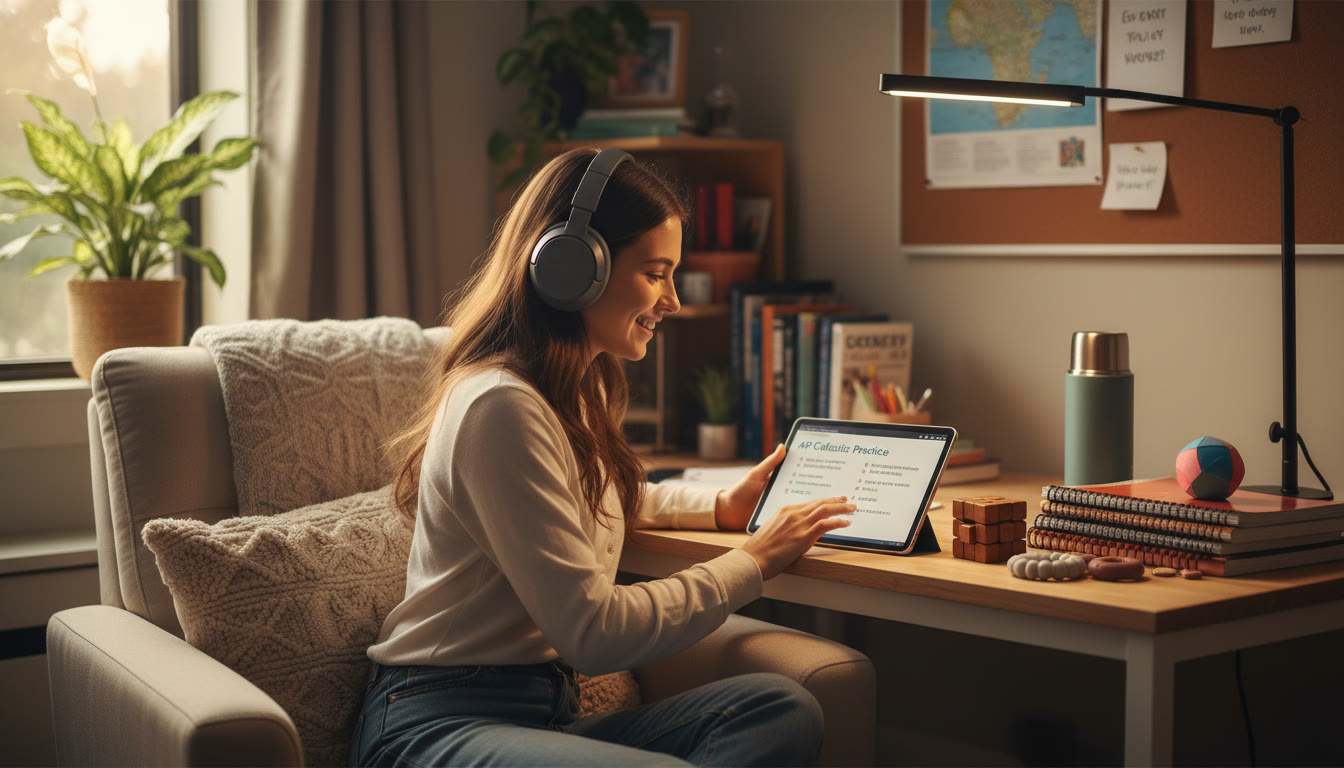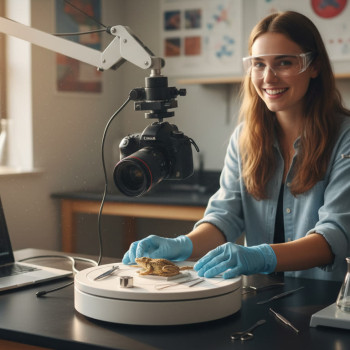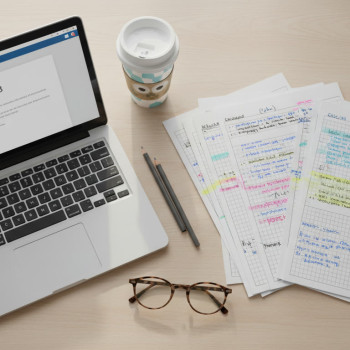Why Neurodiversity‑Affirming Study Techniques Matter for AP Students
Advanced Placement (AP) classes and exams ask a lot: sustained focus, big conceptual leaps, timed performance. For neurodivergent students — those who think, process, or learn differently — the traditional “one‑size‑fits‑all” study advice can feel discouraging or flatly ineffective. Neurodiversity‑affirming techniques don’t try to force students into a mold. Instead, they recognize strengths, work with unique cognitive rhythms, and build strategies that respect sensory, attentional, and executive function differences while still targeting top AP outcomes.
This article doesn’t just list tips; it guides you through designing a study system that fits how you think. Expect practical routines, examples, a simple data table for planning, and real‑world study templates. You’ll also see how targeted supports — like approved exam accommodations — and tailored tutoring (including 1‑on‑1 guidance from services such as Sparkl’s personalized tutoring) can plug into a neurodiversity‑affirming plan and boost confidence and performance.

Start with Strengths: A Short Self‑Audit
Before you overhaul your study plan, take five minutes to map your tendencies. This quick audit helps you match techniques to what actually works.
- Attention: Do you focus best in short bursts or long sessions?
- Memory: Do you remember visuals, stories, or structured lists more easily?
- Processing Speed: Do you need extra time to read and respond comfortably?
- Sensory Preferences: Do you prefer quiet, background noise, or certain textures to stay grounded?
- Executive Function: Is planning and starting tasks the hard part, or is sustaining effort the challenge?
Record the answers in a one‑page sheet. This becomes the foundation for tailoring active study methods and accommodations you might request for AP tests.
Designing a Neurodiversity‑Affirming Study System
A system mixes structure with flexibility. You want repeatable scaffolds (so the brain learns a ritual) and options (so you can adapt by day, subject, or energy level).
1. Ritualize the Start and End of Sessions
Small rituals reduce the friction of starting and stopping. Try a 60‑second warmup before studying (deep breaths, a 30‑second review of yesterday’s notes) and a 90‑second cooldown (write one takeaway and one question to ask your teacher).
2. Use Focus Blocks That Fit Your Attention Style
Not everyone benefits from a 50‑minute study block. Experiment with variants and keep a simple log to find your sweet spot.
- Ultra Short: 10–15 minutes focused work + 5 minute break (good for hyperfocus bursts or tasks you dread).
- Standard: 25–35 minutes + 5–10 minute break (a flexible Pomodoro that suits many students).
- Long Play: 50–90 minutes + 15–20 minute break (for deep reading or project work when energy and interest are high).
3. Layer Multi‑Sensory Study Methods
Converting information into several sensory formats strengthens recall. Pair a concept map with a 60‑second verbal summary, highlight key phrases in a color you associate with that idea, and sketch a tiny metaphor to make it stick.
4. Scaffold Tasks into Actionable Steps
Breaking a big assignment into specific, tiny next steps combats paralysis. Instead of “study biology,” try: (1) open Topic 3 notes, (2) read first paragraph, (3) create 3 flashcard questions, (4) do one practice question. Checking off the small wins fuels momentum.
Study Techniques Tailored to Common Neurodivergent Profiles
These are not boxes to be confined by, but prompts to help you borrow useful strategies.
For Students with ADHD
- Externalize memory: use visible timers, checklists, and a single daily planner in a prominent place.
- Movement breaks: stand, stretch, or walk for a minute between focus blocks; body motion helps reset attention.
- Immediate effort rewards: a short preferred activity after completing a study chunk reinforces reliable effort.
For Students with Dyslexia or Reading‑Based Processing Differences
- Audio first: listen to AP Daily videos or read text aloud using text‑to‑speech, then annotate while listening.
- Chunked reading: read one paragraph, summarize it aloud, then mark key terms to review with flashcards.
- Use color and spacing: large fonts, generous line height, and color‑coded notes improve parsing.
For Students with Autism Spectrum Strengths/Challenges
- Predictability: a consistent weekly schedule reduces anxiety and lets you focus on content rather than logistics.
- Interest‑driven learning: connect AP topics to special interests (e.g., use scientific experiments that mirror a personal hobby) to increase engagement.
- Sensory control: create a calm, minimally distracting study environment; use sunglasses, noise buffering, or fidget objects as needed.
For Students with Executive Function Differences
- Automate planning with templates: a repeatable study template for each subject (warmup, 2 study items, practice question, reflection) reduces decision fatigue.
- Visual timelines: map out study weeks leading to the AP exam with color blocks so you can see pacing and progress.
- Accountability partners: short daily check‑ins with a friend, coach, or tutor keep plans alive.
Practical Tools and Routines That Help
Tools are only as useful as the routines that anchor them. Below are practical combos proven to increase retention and lower stress.
Active Recall + Spaced Practice
Active recall (testing yourself) beats passive review. Combine it with spaced intervals: quiz once the day you learn something, then at 3 days, 10 days, and 30 days. Use flashcards, typed practice answers, or rapid oral explanations to a study partner.
Interleaving vs Blocked Practice
Mix different types of problems rather than doing 20 of the same style. For AP exams that test skills across topics (like AP Psychology or AP Calculus), interleaving helps your mind discriminate which approach applies to which problem.
Error Logs and Recovery Rituals
When you get a practice question wrong, log the mistake and write a 50‑word plan for how to avoid it next time (e.g., “Reread the prompt before solving,” or “Underline units”). The act of reflecting consolidates learning and reduces repeating the same error.
How to Use Accommodations Strategically
Accommodations exist to level the playing field — they aren’t an advantage, they’re fairness. If you already have an IEP or 504 Plan, you’ll likely be eligible for College Board accommodations, which may include extended time, extra breaks, or assistive technology for digital AP Exams. If you don’t yet have documentation but suspect you’d benefit, talk to your school’s SSD coordinator about the process and timeline for requesting support.
Plan early: accommodation approval processes take time and usually must be confirmed well before exam day. Once approved, practice in the same conditions you’ll face on test day — e.g., try timed sections with the same extra time or use the same text‑to‑speech setup so there are no surprises.
Schedule Template: A Week‑by‑Week Build Up to Exam Day
This sample 8‑week build focuses on increasing practice testing, refining strategies, and consolidating content. Adapt block lengths to your attention profile.
| Week | Main Goal | Weekly Activities |
|---|---|---|
| Weeks 1–2 | Foundation: Identify weak topics | Diagnostic exam, daily 25–35 minute review blocks, active recall for fundamentals |
| Weeks 3–4 | Skill building | Targeted practice sets, interleaving problem types, weekly full‑length timed section |
| Weeks 5–6 | Practice fluency | Two timed practice sections per week, error logs, simulated exam conditions with accommodations if approved |
| Weeks 7–8 | Polish & pacing | Review hardest problems, finalize test‑day routine, light practice days and recovery |
Making Study Workdays Sustainable: Self‑Care and Sensory Strategies
Study stamina starts with a body and environment that support your brain. That means practical sensory and self‑care hacks you can actually use between classes.
- Sleep first: prioritize consistent sleep blocks; even small gains in sleep quality improve executive function.
- Nutrition and hydration: quick protein snacks and water support attention; avoid heavy meals right before a study session if they make you sluggish.
- Sensory toolkit: keep noise‑canceling headphones, a textured fidget, and a small light source or sunglasses available to quickly adapt your environment.
- Micro‑movement: micro workouts (1–3 minutes) reset focus better than long breaks when you have limited time.
Practice Testing: Simulate, Analyze, Improve
Simulation is the closest thing to rehearsal for high‑pressure AP moments. Use full or partial practice exams under conditions that match your real test — same time limits, same permitted tools, and (if applicable) your approved accommodations. Immediately after each simulation, spend the same amount of time analyzing mistakes as you did taking the exam. The faster you turn practice into specific corrections, the quicker your score trajectory will rise.
How Personalized Tutoring Fits Naturally
Many students benefit from targeted, guided practice — especially when it’s personalized to their thinking style. 1‑on‑1 tutors can model active recall, break down confusing topics into digestible pieces, and help design practice schedules that respect attention and sensory needs. For students looking for a structured, individualized approach, Sparkl’s personalized tutoring offers expert tutors who create tailored study plans and use AI‑driven insights to track progress and adapt sessions. When used alongside accommodations and a neurodiversity‑affirming routine, personalized tutoring can transform inconsistent study into steady, confidence‑building progress.
Examples: Two Student Case Studies
Case Study 1 — Maya (ADHD, AP US History)
Maya struggled to sustain long reading sessions and often blanked during timed essays. Her tailored plan emphasized short focus blocks, audio recordings of lecture highlights, and weekly timed thesis practice. She used checklists to kickstart sessions and a two‑question reward system (complete two thesis outlines, get 15 minutes of drawing). After six weeks she reported reduced anxiety and improved timing on practice DBQs.
Case Study 2 — Jamal (Dyslexia, AP Chemistry)
Jamal found dense textbook language taxing. He converted chapter summaries into short voice notes and used a color‑coded equation sheet to reduce decoding time. He practiced multi‑sensory chemistry labs via videos and explained problem steps aloud to a tutor. When he received approved extra time for the exam, he practiced with the same timing and tech so the day felt familiar rather than novel.
Checklist: What to Do This Week
- Complete the 5‑minute self‑audit and keep it near your planner.
- Schedule three focused study sessions using a block length that matches your attention pattern.
- Book a session with your school’s SSD coordinator if you think accommodations are needed; collect documentation early.
- Try one sensory tweak (headphones, lamp, or fidget) and track whether it improves focus.
- Consider a trial of 1‑on‑1 tutoring to build a tailored plan and test strategies — aim for a tutor who understands neurodiversity strengths and needs.

Measuring Progress Without Burnout
Progress should be measured with a light touch. Track three metrics: accuracy on practice questions, consistency of study sessions completed, and comfort/confidence level before practice tests. Use a simple weekly chart: green (goal met), yellow (partial), red (missed). If you see persistent red in accuracy, revisit technique; red in consistency means adjust the schedule to be smaller and easier to start.
Common Challenges and How to Solve Them
Every strategy has friction points. Here are real fixes to common problems:
- Can’t start: implement a 2‑minute rule — you only need to begin for two minutes, and often you’ll continue.
- Study sessions drift: use a visible timer and a fidget to anchor attention.
- Too anxious on test day: rehearse the routine many times, including travel and breaks; familiarity reduces fight‑or‑flight responses.
Final Thought: Build a Study System That Respects You
Neurodiversity‑affirming study techniques are about more than better scores; they’re about creating sustainable learning that honors how you think. Start small, iterate, and prioritize strategies that reduce friction. Pair accommodations with practice in real conditions, and use personalized supports — like Sparkl’s tutors or an SSD coordinator at school — when you want someone to help co‑design the plan. Over time, those small, respectful changes compound into stronger performance, steadier confidence, and a more humane way to prepare for AP success.
Remember: the goal isn’t perfection. It’s a study process that lets your strengths shine and your brain do its best work on exam day.



















No Comments
Leave a comment Cancel